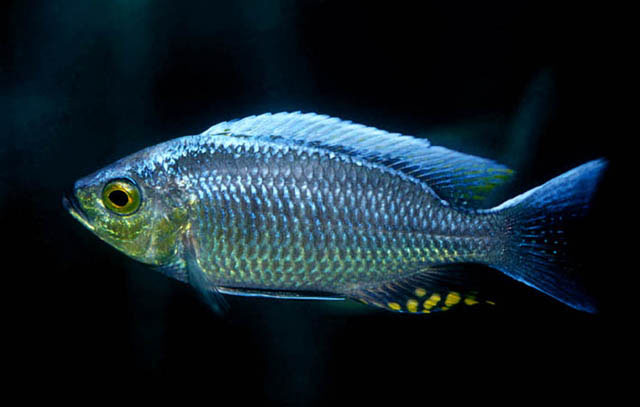| Cichlidae (Cichlids), subfamily: Pseudocrenilabrinae |
| 11.41 cm SL (male/unsexed); 11.09 cm SL (female) |
|
benthopelagic; freshwater; depth range 7 - 30 m |
| Africa: Lake Malawi. |
|
Dorsal spines (total): 16-17; Dorsal soft rays (total): 10-12; Anal spines: 3-3; Anal soft rays: 10-11. Depth of body 2.6-2.9 times in SL; head length 3.1-3.4 times in SL (Ref. 47113). Eye diameter 2.9-3.2 times in HL; interorbital width 3.4-4.1 times in HL; premaxillary pedicel 2.4-3.1 times in HL and depth of preorbital 5.6-7.0 in HL (Ref. 47113). Teeth in 2 to 3 rows in upper and 3 to 4 rows in lower jaw (Ref. 47113). Males mostly with unicuspid teeth in all rows; in females outer rows contain unequally bicuspid and inner rows contain unequally tricuspid teeth (Ref. 47113). Length of pectoral fin 2.8-3.7 times in SL (Ref. 47113). Caudal peduncle 5.4-7.6 times in SL; peduncle depth 1.0-1.5 times in its length (Ref. 47113). Scales: 34-35 scales in a longitudinal series (Ref. 47113). Without spots on the flanks (Ref. 47113). Geographical variation seems to be restricted to the color of the blaze on the male's head and dorsal fin (Ref. 47113). |
| Associated with rocks (Ref. 54524). Males build their spawning sites at depths of approximately 25 meters or deeper; females, in particular mouth brooding females, can be found in shallower water, but they rarely venture into regions shallower than 10 meters (Ref. 47113). |
|
Least Concern (LC); Date assessed: 22 June 2018 Ref. (130435)
|
| harmless |
|
Source and more info: www.fishbase.org. For personal, classroom, and other internal use only. Not for publication.

